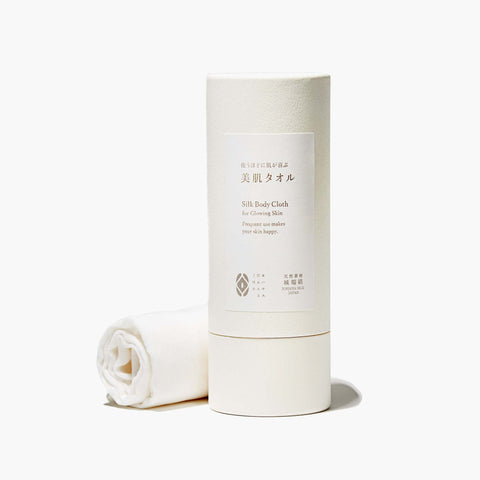How to Get the Onsen Experience At Home
Global travel restrictions, unpredictable closures, and safety and financial considerations have shelved many an onsen Japan trip. Perhaps we needn’t say it, but a Japanese bath is meant not for cleaning, but for clearing the mind and healing the body. It would have been a pretty nice way to take a break from this horrific stress pile-up! Well, we at Bokksu are all about bringing Japan to you wherever you are. If you want a trip to a Japanese bath house but can’t leave your own, we’ve got some advice (and a suggested shopping list) to help you create “the onsen experience” right in your own tub.
Japanese bath houses, Ryokan, and Onsen
A note on verbiage before we dive in. Even though you can technically take a Japanese bath in…a Japanese home, when we say “Japanese bath,” we mean the kind you’d take at a hot spring. Another place to take a Japanese bath? A Japanese bath house. If you’re looking for bonafide hot springs (aka onsen), Japan is peppered with them! “Japanese bath house” can be translated two ways: sento are public baths that aren’t necessarily hot springs. Ryokan could be described as a Japanese bath house, but more accurately, they’re the traditional inns built around onsen. Studio Ghibli fans: think Spirited Away.
In short, there are non-onsen Japanese baths, and non-onsen Japanese bath houses, but we’ll be using these terms to talk about the verdant, steaming outdoor onsen of your dreams.
Get Clean Before You Hop In
The first step to creting an onsen experience is to follow procedure. Before you soak, get super, squeaky clean! For “outdoor luxury,” lather up in the green, earthy fragrance of organic tea soap. Each bar in this three-scent set has a different “flavor,” all sourced from the birthplace of matcha.

Shampoo, condition, and then make sure you are rinsed completely clean before even thinking about soaking. You can use this silk-cotton blend body wash cloth to scrub or dry off. (And you will need to dry off, especially if your shower isn’t separate from your soon-to-be Japanese bath tub!) Like the tea soap, this onsen towel is made by a centuries-old company using traditional techniques and natural materials.

Our other onsen towel option is actually an all-pupose traditional cloth wrapper, or tenugui, available here as part of a rice cracker gift set. You can use this onsen towel as a thin washcloth or drying towel, your choice! Beer pairs well with the rice crackers…it also happens to be a favorite onsen beverage.

Put on Some Onsen Japan-wear
Unless you’ve already got a soaking tub at home, you’ll likely want to spray down your tub before you fill up your Japanese bath. During that time, you should feel clean and comfortable! You really can’t go wrong with the supremely comfortable loungewear robe. It’s super soft and a great way to keep afloat the relaxation and rejuvenation you want from your Japanese bath house experience between shower and soak.

If you don’t already have one, we recommend a terry cloth headband. It will keep your hair out of your face, essential when you’re at the steamy onsen! Which reminds us: make sure you keep your hair out of the tub, too.

In your own home, it’s not for health so much as for vérité; this trip to the onsen is only as real as you make it! If you want to go the extra mile, pack an “Onsen Japan” bag

and click-clack into your Japanese bath house on some lacquered sandals. This is jetsetter cosplay, the flight-to-nowhere of bathing experiences.

Onsen Ambience: Soft Light, Scent, and Fresh Air
The most impactful way to create an onsen experience in your own home is to trick the senses. Try candles for a softer glow that will highlight the mesmerizing curl of steam. For slow contemplation, we recommend trying a “candle-illustration” set by 140-year-old Japanese candle maker Kodaikokuya. Set in a row, each candle set offers seasonal views: yukiyama (snow-capped mountain) for the cold, blooming sakura, summer hanabi (fireworks), or an autumnal harvest moon festival scene.

Another sense for contemplation? Sound! On top of a recording of crickets or whistling winter winds, you can create a sense of onsen “space” with a simple wind chime. Maker 224porcelain has created elegant, evocative designs: dodecagon, tea house decor akoda-uri (Japanese pickling melon), or even New Year’s kasane (stacked) mochi.

Your bathroom is probably already full of scents from your daily products, and we’d venture a guess that there’s not too much wood involved. Japanese bath houses are often fragrant with wood. Tubs, shower stools, sauna benches, and even buckets are often made of it! To instantly transform your candlelit onsen, Bokksu recommends a wood diffuser. We have two intricate, hand-assembled designs, that are impossibly easy to use. Just release a drop of wisteria or hydrangea aroma oil onto the diffuser! The heat from your “onsen” will help the scent travel over the yellow cedar diffuser, no fire or electricity necessary.

With these few sensory tools, you don’t have to work hard to imagine you’re soaking in the beautiful, relaxing onsen Japan is famous for. The trick is to transport yourself somewhere you can let go: let the mind linger over some new sound or scent, close your eyes, and breathe deep. You’re in a Japanese bath house, a world away from the bathroom you left behind just moments ago.
By Emi Noguchi
Author Bio











